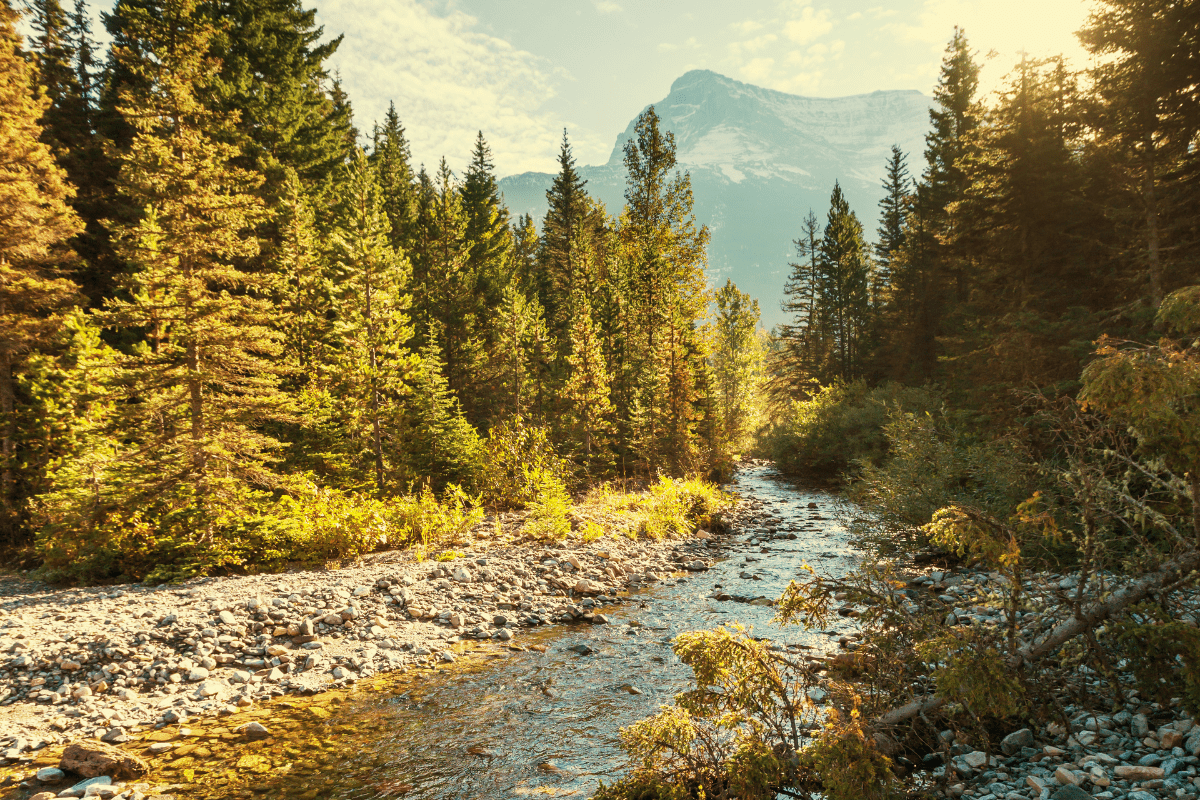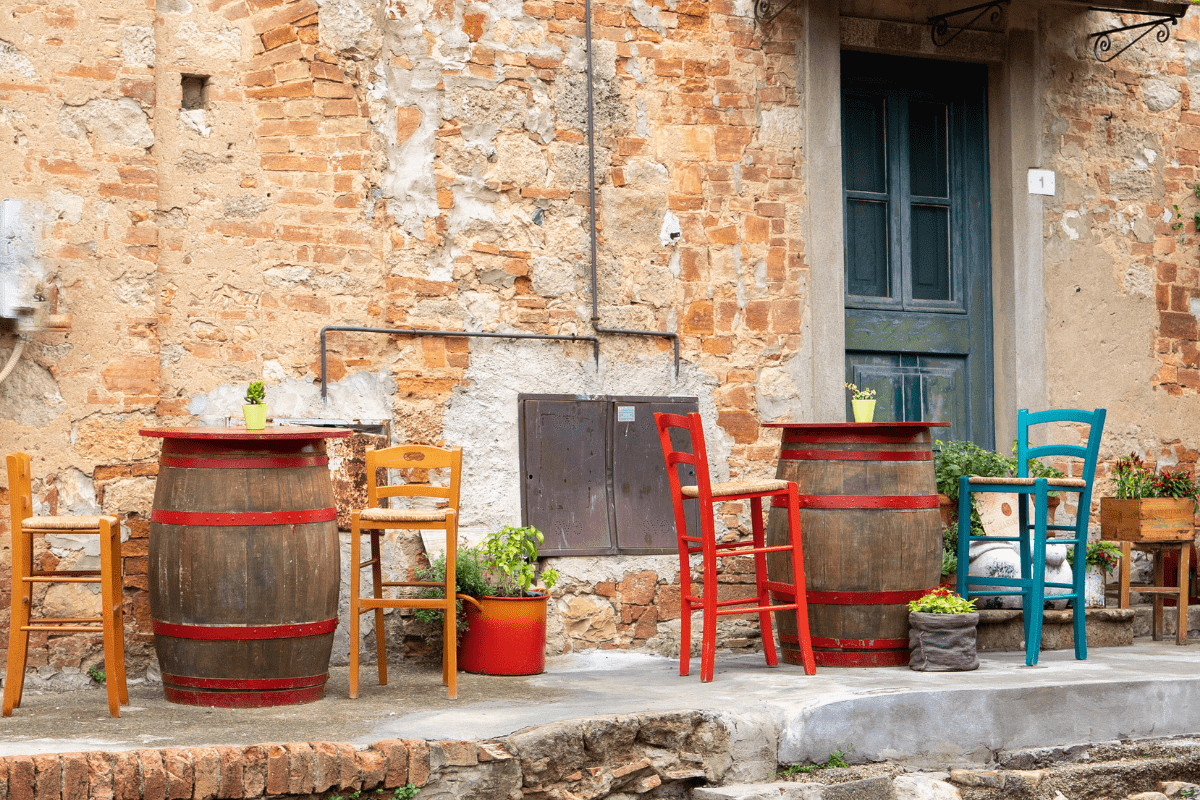Montana's waters will absolutely ruin you for paddling anywhere else. Once you've kayaked beneath Glacier's towering peaks or floated through the Smith River's limestone canyon, your local pond back home starts looking pretty underwhelming.
Understanding Montana's paddling personality
Before we dive into specific spots, let's talk timing, because Montana's waters have serious mood swings throughout the year. The prime paddling window runs from May through October, though what you'll experience varies wildly depending on when you show up.
Spring runoff from late May through early June transforms these rivers into absolute beasts. The Blackfoot River, normally a friendly float, surges to 6,000 cubic feet per second during peak melt… that's ten times its lazy August flow. If you're an adrenaline junkie with proper cold-water gear, this is your playground. Alberton Gorge cranks up to Class IV rapids, and you'll have the river mostly to yourself since sensible people are waiting for warmer weather.
Summer brings what most folks consider "normal" paddling conditions. July and August see lakes like Flathead warming to a balmy 65-75°F, which sounds nice until you remember that's still pretty darn cold for swimming. This is family season, beginner season, and unfortunately, everybody-and-their-cousin season. If you're heading to Glacier National Park, set that alarm clock… parking at Lake McDonald fills up faster than a freshman dorm fridge.
My personal favorite is fall paddling. September and October offer stable water levels, jaw-dropping autumn colors, and blissfully empty launch sites. The catch? Water temperatures drop fast, and many outfitters close shop after Labor Day. Pack that wetsuit and embrace the chill.
Lake destinations that'll make you forget the ocean
Montana's lakes offer everything from intimate alpine puddles to inland seas that'll make you seasick if you're not careful. Here's where to dip your paddle.
Flathead Lake: Montana's great lake
Flathead Lake doesn't mess around. At 28 miles long and 15 miles wide, this is the largest natural freshwater lake west of the Mississippi, and it acts like it knows it. The lake has six state parks with boat launches, and yes, you'll pay a day-use fee, but trust me, it beats hauling your kayak half a mile from some sketchy roadside pullout.
The classic paddle here is launching from Big Arm State Park and crossing to Wild Horse Island. It's about an hour for intermediate paddlers, assuming you don't get distracted by the actual wild horses, bighorn sheep, and mule deer that call the island home. The 2,165-acre island state park has several landing beaches and hiking trails, making it perfect for a full-day adventure.
Weather on Flathead changes faster than a teenager's mood. Mornings typically offer glass-smooth conditions, but by afternoon, winds can whip up whitecaps that'll humble even experienced paddlers. The lake's water trail system connects various landmarks and provides access to paddle-in-only campgrounds for multi-day adventures. Just remember: this lake is big enough to get genuinely lost on, so bring a map and maybe don't trust your "excellent" sense of direction.
Glacier National Park: Instagram paradise
Lake McDonald gets all the glory, and honestly, it deserves it. At 10 miles long and over a mile wide, it's Glacier's largest lake and probably the most photographed body of water in Montana. You can rent kayaks at Apgar Village or Lake McDonald Lodge from May through September. Fair warning: even in peak summer, this glacier-fed water stays below 60°F. That refreshing morning paddle can turn into a hypothermia risk real quick if you take an unexpected swim.
For a more intimate experience without the Apgar crowds, head to Swiftcurrent Lake in the Many Glacier Valley. Early morning paddlers here often get the lake to themselves, plus there's a decent chance of spotting moose doing their morning wade along the shoreline. Just remember that moose are basically horses with anger management issues, so admire from a distance.
Two Medicine Lake offers intermediate paddlers a scenic 3-mile crossing to a dock where you can stash your kayak and hike to Twin Falls. Saint Mary Lake looks gorgeous but can turn nasty fast when winds funnel through the valley. The south shore is only accessible by water, making it a perfect escape from the Going-to-the-Sun Road crowds.
Hidden gems worth the drive
Holland Lake in the Flathead National Forest is my go-to recommendation for people who want the Glacier experience without the Glacier crowds. The Forest Service campground provides easy launching, and there's a rope swing on the southeast corner that'll make you feel 12 years old again… right up until you hit that cold mountain water.
River runs from mellow to mental
Montana's rivers offer everything from lazy floats perfect for working on your tan to whitewater that'll reorganize your internal organs.
The Middle Fork Flathead: Wilderness whitewater
The Middle Fork forms Glacier's southern boundary and offers some of the most scenic whitewater in the state. The glacier-blue water alone is worth the price of admission. The most popular section runs from Bear Creek to West Glacier, featuring consistent Class III rapids that'll keep you engaged without terrifying your mother.
Access requires planning since many sections flow through legit wilderness with limited escape routes. If you're new to the river, book a guide… getting lost out here isn't a minor inconvenience, it's a survival situation.
Clark Fork River: Urban thrills
Missoula's Brennan's Wave is basically a whitewater treadmill in the middle of downtown. You can practice surfing and cartwheeling while office workers eat lunch on the riverbank. It's surfable at most water levels, making it perfect for skill development without committing to a full river run.
For the real deal, head 30 minutes west to Alberton Gorge. This 9-mile stretch serves up Class II, III, and IV rapids depending on flows. Late spring brings the biggest water, while fall reveals technical lines that require actual skill rather than just holding on and hoping.
The Missouri River: Time travel paddling
Want to paddle where Lewis and Clark literally paddled? The Missouri River's got you covered. The Lewis and Clark Trail in Great Falls offers a 6.25-mile marked route with interpretive signs sharing journal entries from the 1805-1806 expedition. It's like a history lesson that doesn't suck.
The Wild and Scenic section through the White Cliffs spans 149 miles of river that looks essentially the same as when the Corps of Discovery passed through. Multi-day trips here offer towering white sandstone formations, abundant wildlife, and designated camping areas. No permits required, though registration is recommended so someone knows to look for you if things go sideways.
The Smith River: Montana's lottery ticket
The Smith River is Montana's worst-kept secret that's still somehow a secret. This 59-mile float through a remote limestone canyon is so popular it requires a permit lottery. Applications run from January 1 through February 15 for the following season. Your odds aren't great, but hey, someone's gotta win.
Here's the insider move: paddle before permit season starts around April 12. Just call the permit office for availability. Early season flows can be sketchy though… recommended minimums are:
- Canoes: 150 cfs
- Rafts: 250 cfs
- Drift boats: 350 cfs
The typical trip takes four days through 27 designated boat camps. From May 15 to July 15, you're limited to four nights maximum, including any stays at private cabins. It's wilderness paddling at its finest, with zero services between launch and takeout.
The rules that'll keep you legal (and alive)
Montana takes its waterways seriously, and ignorance of regulations won't save you from fines or worse.
The paperwork parade
If you're bringing a kayak from out of state, you'll need an Aquatic Invasive Species Pass. It's $10 annually for non-motorized craft, available online or at FWP offices. You must stop at all inspection stations… blow past one and you're looking at serious fines. These inspections aren't just bureaucratic nonsense; zebra mussels and other invasives can destroy entire ecosystems.
Montana residents don't need to register non-motorized kayaks, but everyone needs proper safety gear. That means USCG-approved life jackets for each person, and kids 12 and under must wear them at all times. Federal waters also require visual distress signals.
The BUI reality check
Yes, you can get a DUI on a kayak in Montana. The 0.08% blood alcohol limit applies to all watercraft. That riverside beer might seem harmless, but getting busted for BUI carries penalties ranging from misdemeanor to felony charges. Save the celebration for shore.
Location-specific quirks
Western Montana lakes under 35 acres are limited to no-wake speeds. Glacier National Park requires boat inspections for invasive species. Many areas require conservation licenses for anyone 12 and older, though state parks are exempt. The Flathead River below Flathead Lake crosses tribal lands requiring special permits available online through Montana FWP.
Planning your Montana paddle adventure
Essential gear that's actually essential
Montana's water is cold. No, colder than you're thinking. Even in August, glacier-fed lakes hover around 60°F. Here's what you actually need:
- Wetsuit or drysuit for spring/fall
- Extra insulation layers
- Waterproof sun protection
- Bear spray for backcountry paddles
- Whistle (required on federal waters)
- First aid kit
- Dry bags for everything important
Timing and logistics
Popular launches in Glacier fill by 9 AM in summer. Set multiple alarms. Gas stations become mythical creatures in remote areas, so fill up in gateway towns. White Sulphur Springs for the Smith River, West Glacier for the park, and don't assume that dot on Google Maps has actual services.
Weather changes fast here. That sunny morning can turn into a hailstorm by lunch. Check forecasts obsessively and have bailout plans. Cell service disappears quickly outside towns, so download offline maps and tell someone your float plan.
Finding guides and rentals
Outfitters provide both equipment and local knowledge that could save your bacon. In the Glacier area, Go Glacier Outfitters operates from Apgar Village, while Sky Eco Rentals in Columbia Falls will deliver gear to your lodging. Sea Me Paddle covers Flathead Lake with multiple locations.
Many outfitters close after Labor Day, so September paddlers need to plan ahead. Guided trips typically include all gear and the invaluable knowledge of someone who actually knows where they're going.
Multi-day trips and wilderness considerations
Multi-day paddling in Montana requires serious planning. Bear-resistant food storage is mandatory in many areas, and "I'll just hang it in a tree" doesn't count. Water purification is essential since many camps lack potable water. Giardia will ruin your trip faster than bad weather.
The Smith River limits camping to designated sites, and you must camp where you registered during the permit process. The Flathead's South Fork offers 60 miles of wilderness paddling with established camps, but you're on your own for everything else.
Making it happen
Montana's kayaking scene offers everything from casual lake paddles to expeditions that'll test your limits. Start with the accessible stuff… Lake McDonald, Flathead Lake, the Missouri River floats… then work up to the wilderness adventures. The state's combination of pristine waters, stunning scenery, and genuine wildness creates paddling experiences you literally can't find anywhere else.
Yeah, the water's cold, the weather's unpredictable, and the distances are vast. But when you're floating through a limestone canyon that's barely changed since the dinosaurs, or watching sunrise paint Glacier's peaks pink from your kayak, you'll understand why Montana paddlers have that slightly crazed, completely satisfied look in their eyes. Just remember to check those water levels, pack that bear spray, and for the love of all that's holy, stop at the inspection stations.





